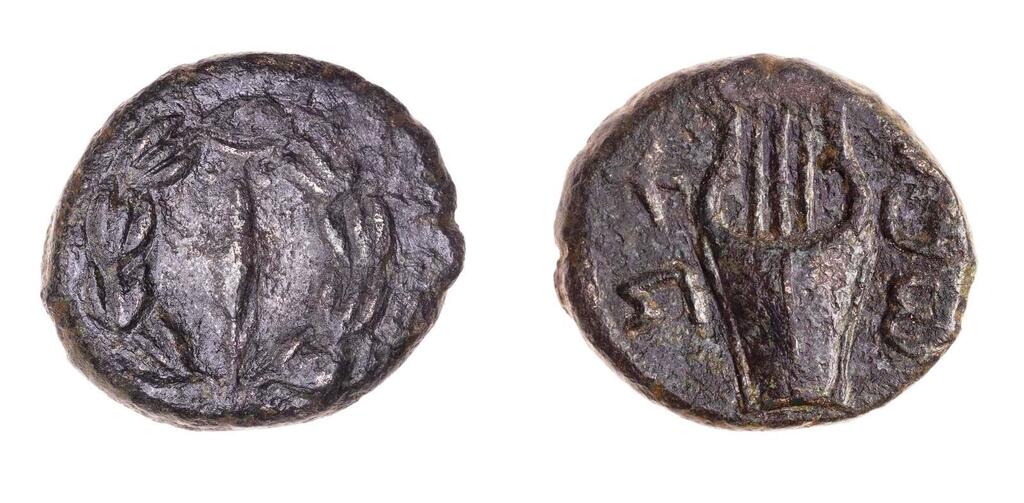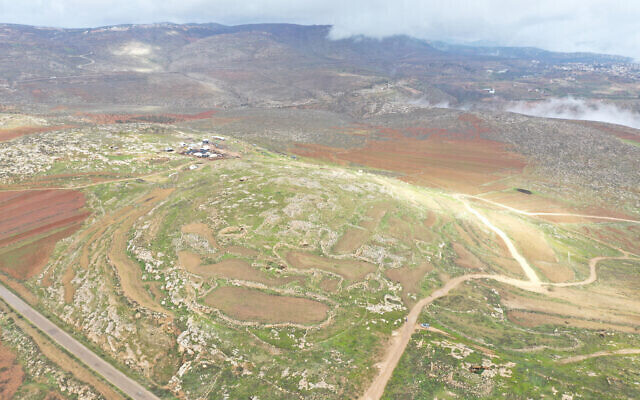Two rare coins dating back to the Jewish revolts against the Romans were recently discovered by Israeli archaeologists in the Binyamin region of the West Bank.
One coin from the days of the Great Revolt, which ended in 70 CE with the destruction of the Second Temple, was found in Khirbat Jib’it near the settlement cluster of Gush Shilo. Another coin from the days of the Bar-Kochba revolt around 135 CE was found in a cave on the nearby Wadi Rashash cliffs.
2 View gallery


The 2,000-year-old coins that date back to the period of the Jewish revolts against the Romans
(Photo: TPS)
The coin from the Great Revolt was minted around 67 CE and bears on one side a vine leaf and the Hebrew inscription “Herut [freedom of] Zion,” and on the other side a chalice and the inscription “Year Two [of the revolt].”
The coin from the Bar-Kochba revolt was minted between 135-134 CE. One side has a Lulav - a closed frond of the date palm tree - surrounded by a wreath and the inscription “Herut Yerushalayim,” and on the other side bears a musical instrument, probably a harp, and the inscription “Shimon,” the first name of the rebel leader Shimon Ben Kusba, known as Bar-Kochba.
“The symbols and slogans on the Jewish coins during the two Roman wars declared the rebels’ goals: political freedom, the liberation of Jerusalem from the Roman conqueror and the renewal of worship in the Temple,” the researchers who discovered the coins explained.
The coin from the Great Revolt joins other finds from the Second Temple period and from the days of the revolts against the Romans that were discovered in the area, including mikvahs (ritual baths), hiding places, stone vessels and burial caves, all of which belonged to a Jewish settlement that existed in the area until the end of the Bar Kochba revolt.
The cave at Wadi Rashash contained numerous potsherds that were brought to the cave by Jewish refugees during the Bar-Kochba revolt. This cave is one of the dozens in the area that were used by the rebels.
Dr. Dvir Raviv, who led the dig in the area, said that “the coins from Wadi Rashash indicates the presence of a Jewish population in the area until the end of the Bar Kochba revolt, in contrast to a claim previously made in a study that the Jewish settlement north of Jerusalem was destroyed during the Great Revolt. This coin is the first evidence that the region, the northernmost of the districts of Judea in Roman times, was controlled by the Bar-Kochba administration.”
Binyamin Council Chairman Benjamin Yisrael Gantz stated Tuesday that “it is exciting to see that we live in the area where our ancestors lived in ancient times.”
“We have a national duty to preserve these precious finds that link us here. The State of Israel must take responsibility for its heritage and prevent nationalist looting and corruption,” he demanded.


